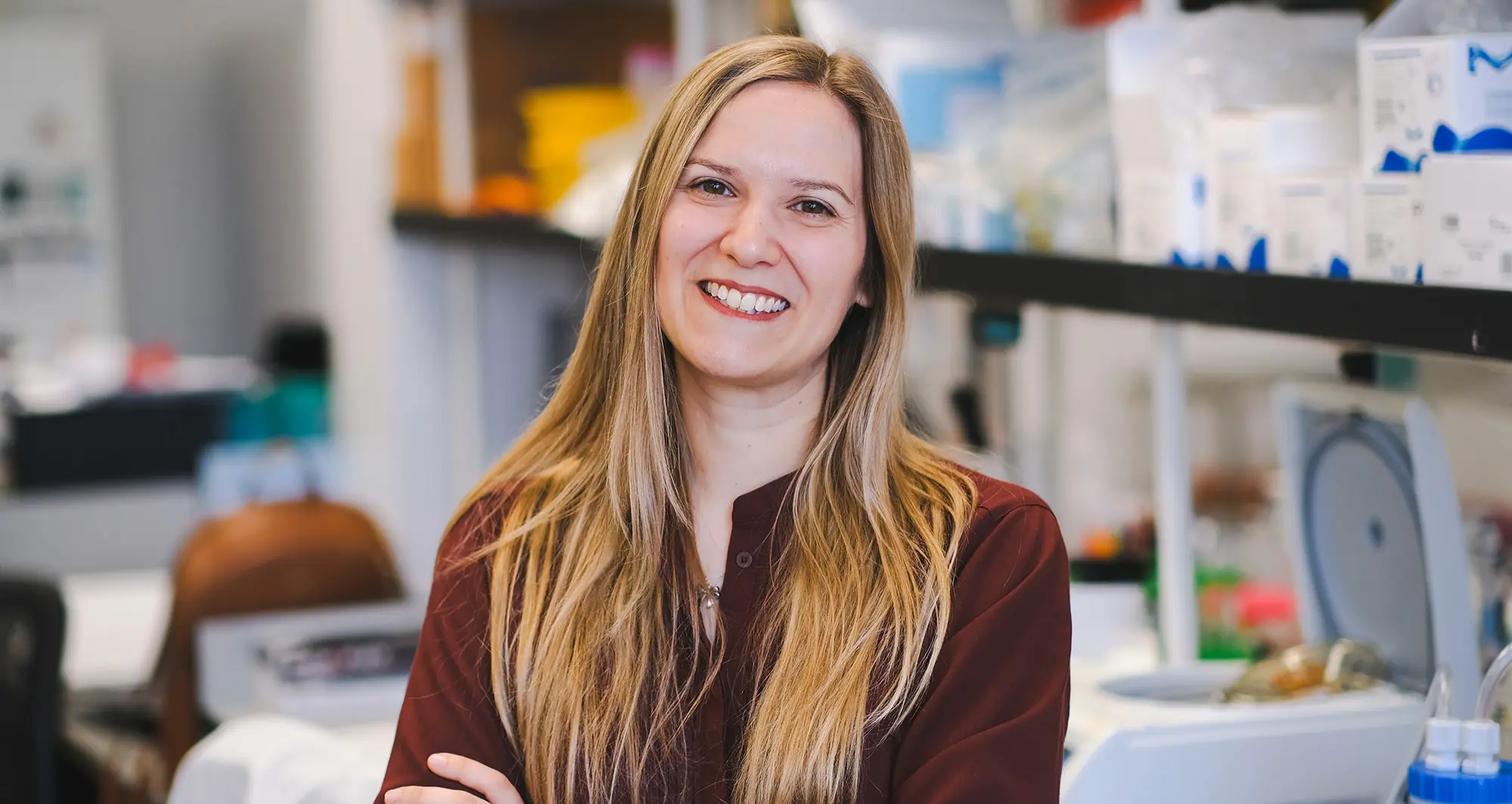Shaping the future of science at Sanford Burnham Prebys: Sara Ancel, PhD, a postdoctoral researcher in the lab of Will Wang, PhD, who draws on a background in engineering and stem cell biology to explore tissue remodeling and disease mechanisms through cutting-edge spatial omics approaches. Originally from Switzerland, she brings together cutting-edge technology and collaborative science to push boundaries—and inspire the next generation of researchers.
How did you first become interested in science—and what brought you to Sanford Burnham Prebys?
I didn’t grow up around science, my parents weren’t in the field, so I didn’t really get exposed to it until high school. But I’ve always been curious, especially about things I didn’t understand. That curiosity led me to study engineering, which gave me the flexibility to explore many scientific fields before focusing on one.
During my master’s studies in Switzerland, I had the opportunity to spend time at Stanford University working in Dr. Helen Blau’s lab. That’s where I met Will Wang, who would later become a principal investigator at Sanford Burnham Prebys. When I was finishing my PhD in Switzerland, he was just starting his lab here. The timing was perfect—and I became his first postdoc.
What drew you to Will Wang’s research?
What really stood out to me was the new technology he was developing—an imaging method that lets us look at many biological markers at once. Coming from an engineering background, that kind of innovation was really exciting. I saw a chance to combine everything I’d been learning, for example, stem cell biology, muscle research, and engineering, into one meaningful project.
Plus, joining a brand-new lab was a unique opportunity. I was involved in everything from setting up experiments and training newcomers to handling operations. It was a fast-paced, all-hands-on-deck experience that taught me so much, both scientifically and personally.
What are you working on now? How would you explain it to someone outside of science?
My main project focuses on a process called glycosylation, which is how cells add sugar molecules to proteins and fats. These sugar tags might sound simple, but they play a big role in how cells function, and how things go wrong in disease.
I had no background in glycobiology when I started, but I was able to bring in new technologies and combine them with biology to explore this process in a completely new way. I’ve also been fortunate to collaborate with the Freeze Lab here at Sanford Burnham Prebys, which has been incredibly valuable.
What makes Sanford Burnham Prebys a unique place to work?
I’ve been so impressed by how collaborative this institute is. It’s a small enough community that people know each other, so reaching out for help or advice is easy. I’ve been able to train on equipment here and at nearby institutions like UC San Diego, and I’ve had the chance to connect with researchers across many fields.
One of the most exciting aspects has been working with clinicians and getting access to real patient samples. That kind of experience really deepens the impact of our research and gives me a broader view of how basic science can connect to human health.
What was one of the biggest challenges you faced when you arrived?
Moving from Switzerland to San Diego was a huge adjustment. I arrived and quickly within about a week, I was in a new culture, new lab, and new scientific environment. I was also the only person in the lab at first, which made things more intense.
But I had great support from international services and from the community of researchers here. That support helped me adapt, and it motivated me to dive in and help get the lab up and running.
What do you hope to do next in your career?
I’ve developed a wide range of skills here, not just technical, but also communication and collaboration. I’d love to build on that by moving into work that’s more closely connected to patients. Collaborating with clinicians and working with patient samples has been incredibly meaningful, and I’d like to pursue more translational or clinical science in the future.
What do you enjoy doing when you’re not in the lab?
Since moving to San Diego, I’ve gotten into climbing and bouldering, it’s something I picked up with friends from neighboring labs. I also love hiking and visiting national parks. Coming from Switzerland, I’m used to mountains, but the parks here in the U.S. are spectacular. I’ve started a list and want to see as many as I can!

What advice would you give to young scientists?
Stay curious. Don’t be intimidated by what you don’t know—see it as an opportunity to grow. Science can be frustrating when things don’t work out, but that’s part of the process. If you accept the ups and downs and keep learning, it can be incredibly rewarding.
Do you have any publications or projects in the works?
Yes! I’m finishing a methods-focused paper on the technology I’ve been developing, and we’ve filed a patent on it thanks to support from the Institute’s intellectual property team. I’m also co-authoring a review article with a researcher from Stanford on drug discovery for muscle aging. It’s been a great opportunity to step back and reflect on everything happening in the field.
Postdocs at Sanford Burnham Prebys are pushing the boundaries of science every day through curiosity, collaboration, and innovation. This series highlights their unique journeys, what inspires their work, and the impact they’re making across our labs.
